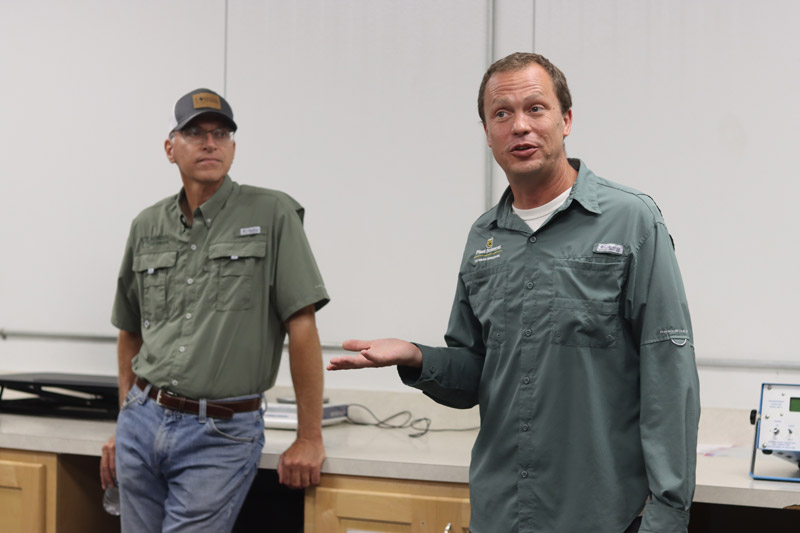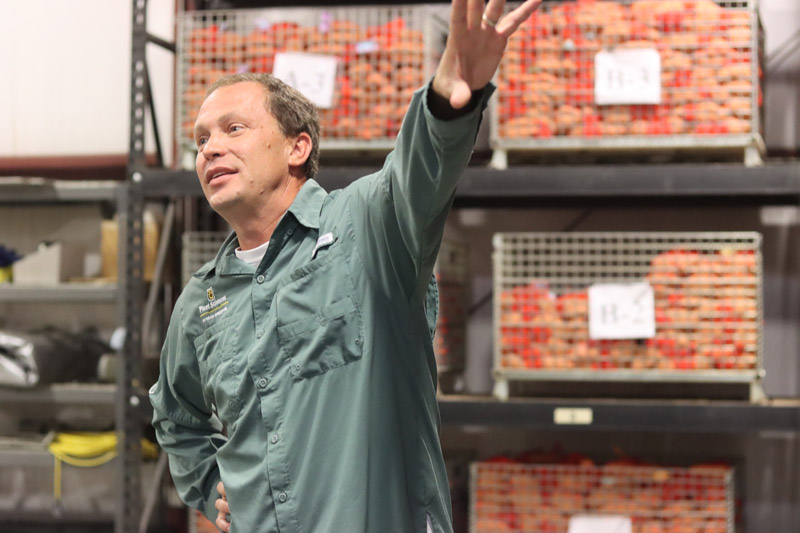Andrew Scaboo’s focus on research was shaped by a team-effort approach. Guided by the resources of prior scientists’ expertise and the farmers’ knowledge, his work is primarily focused on increasing the quality and productivity of the soybeans being planted.
“The progression of knowledge in our society is built with collaboration, it cannot be done by one person,” said Andrew. “Collaboration is the key, especially for the improvement in the productivity and profitability of the farmers’ field. It’s an effort for everyone involved – public researchers, private companies and farmers.”
Understanding that research is a group effort is how Andrew looks at education as well. Several of the students, faculty and staff in his program have gone on to work for small and large seed companies and it’s his job to prepare them for their endeavors.
“Most all of the researchers in the private sector were educated in the public sphere of research,” said Andrew. “It’s indirect but the link between the two is valuable because students are learning how to develop cultivars, what the farmers are growing and how to develop germplasm in an arena that anyone has access to.”
Sharing knowledge and helping people understand the importance of public research is one of the values many breeders – like Andrew – hold close to their hearts.
It’s because of these values, helping the farmer and creating a better product for the public, that traits like SOYLEIC were developed.

“I’ve been involved with cultivar development for the SOYLEIC trait since the inception with strong support from the checkoff,” explains Andrew, “It has been amazing to see the trait through, from that original source all the way to the cultivars that farmers are growing today, it’s remarkable to see the whole of the project.”
Andrew’s team at the University of Missouri prioritizes innovation with the research tactics that they use. One tactic that has changed the game for research is predictive analytics.
“Predictive analytics is what makes research today so different from what it was when I started,” states Andrew. “Plant breeding and much of biology used to be largely an observational science, however, now you can utilize genetic knowledge and large data sets to predict breeding and biological outcomes.”
With new tactics and a vision for the future of public breeding programs, breeders like Andrew are working to improve the soybeans that farmers plant. This effort can be seen through traits like SOYLEIC, which help farmers improve their bottom line, or traits like soybean cyst nematode resistance, which helps farmers improve their yields.
The continued movement of checkoff investments and the return on research can be seen by Andrew Scaboo and his team at the Missouri Soybean Association’s (MSA) Bay Farm Research Facility. With a strong knowledge-share at the forefront, Missouri soybean farmers can rest assured that their checkoff payoffs and more advancements in soybean traits will and can come to fruition in the future.

< Grover Shannon
